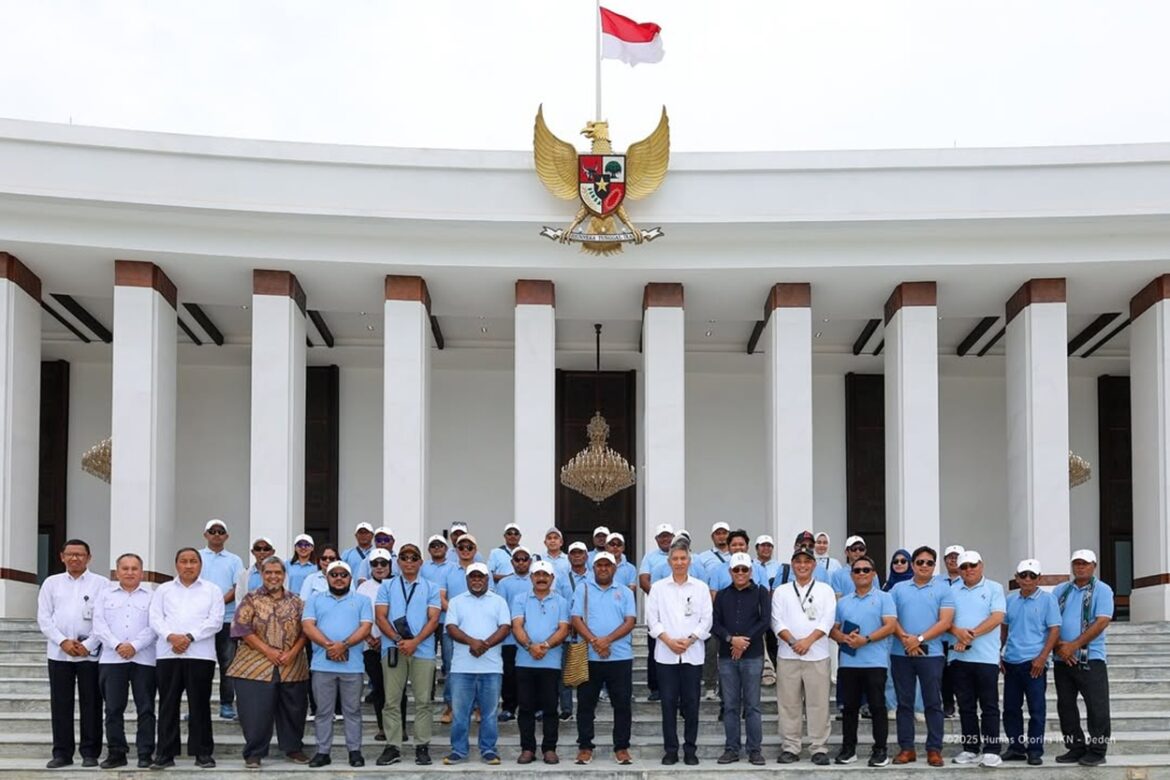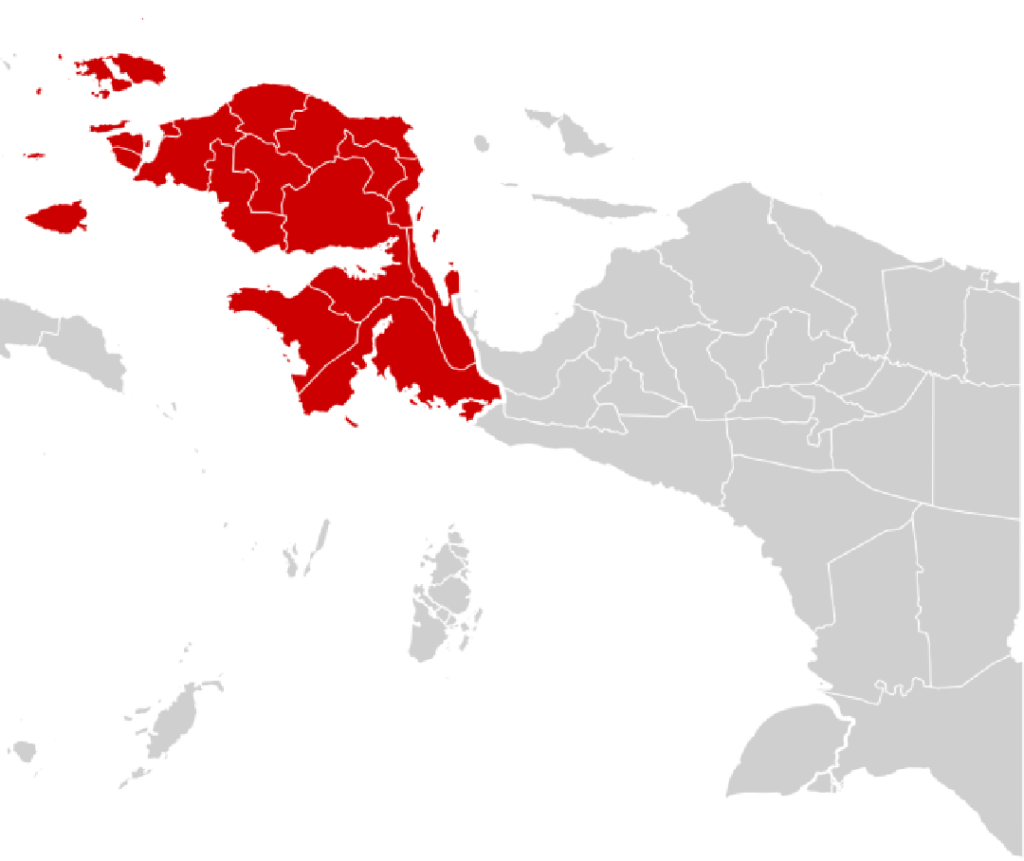When a delegation from the West Papua Provincial Government and Raja Ampat Regency arrived at Indonesia’s future capital, Nusantara (IKN), it was more than a ceremonial visit. It was a journey of learning and inspiration—a moment for Papua’s leaders to observe firsthand the bold vision of a sustainable, inclusive, and technologically advanced city that Indonesia is building in East Kalimantan.
Why Papua’s Delegation Travelled to IKN
The study visit was organized to allow Papuan officials to experience how the IKN Authority is implementing innovative approaches in urban planning, environmental sustainability, and governance. For Papua, a region with immense biodiversity and cultural richness but facing unique development challenges, Nusantara represents both a model and a source of practical lessons.
Officials explained that the primary motivation behind the visit was to ensure Papua does not fall behind in Indonesia’s national development agenda. “We want to make sure that West Papua and Raja Ampat can learn how to manage growth sustainably, without sacrificing culture and nature,” said one provincial representative.
The Symbolism of Learning from Indonesia’s New Capital
For many in the delegation, the trip carried symbolic weight. It showed that Papua is not isolated from the broader national development agenda. By engaging directly with IKN, Papua is positioning itself as an active partner in Indonesia’s future. The presence of Papuan leaders in IKN also sent a message of unity—that Papua’s development journey is intertwined with the aspirations of the entire nation.
The Study Visit Agenda
1. Who Joined the Delegation from West Papua and Raja Ampat
The delegation included provincial officials from West Papua, representatives of Raja Ampat Regency, development planners, and traditional leaders committed to advancing sustainable growth. Their mission was to observe, absorb, and bring back actionable knowledge that could be implemented locally.
2. Reception by the IKN Authority and Program Overview
Upon arrival, they were warmly welcomed by the IKN Authority, who presented an overview of the city’s master plan. The program included site tours of key development areas, presentations on sustainability strategies, and dialogues on governance and community involvement. Delegates were given the opportunity to interact with planners, architects, and environmental experts working on the new capital. This exchange provided valuable insights into how large-scale development can still be aligned with sustainability principles.
What IKN Represents for Indonesia
1. The Vision of Nusantara as a Green and Smart City
IKN is designed not merely as a relocation of the capital but as a reimagining of what a modern Indonesian city should look like. With plans emphasizing green spaces, renewable energy, and digital infrastructure, Nusantara is set to become a showcase of sustainable urban living. The integration of nature into the city’s design reflects a philosophy that development must not come at the cost of the environment.
2. Sustainability and Inclusivity as the Foundation
The city’s vision is built on inclusivity—ensuring that development benefits diverse communities—and sustainability, safeguarding natural ecosystems while enabling growth. These values resonate strongly with Papua, where environmental preservation and cultural respect are vital. For Papuan delegates, it was reassuring to see that the national government is prioritizing ecological and social balance in its flagship project.
Key Lessons for West Papua and Raja Ampat
1. Integrated Urban Planning and Ecological Corridors
Delegates observed how Nusantara integrates ecological corridors into city planning, ensuring that urban growth does not disrupt biodiversity. For Papua, where forests and marine ecosystems are central to life, such approaches offer critical insights. The model of protecting ecological zones while still allowing development could be adapted to Papuan cities.
2. Renewable Energy and Smart Infrastructure
Another major lesson came from Nusantara’s commitment to renewable energy and smart infrastructure. Papua, with its vast renewable potential—hydropower, solar, and wind—can adopt similar strategies to reduce dependence on fossil fuels. If managed wisely, West Papua and Raja Ampat could become renewable energy pioneers in Eastern Indonesia.
3. Inclusive Governance and the Role of Traditional Leaders
IKN places importance on engaging various stakeholders in its governance. For Papua, this aligns with the need to involve traditional and cultural leaders in shaping local policies. Papuan delegates noted how IKN’s participatory approach could strengthen trust between the government and local communities.
4. Holistic Planning Versus Fragmented Development
The delegation noted how Nusantara avoids fragmented, project-by-project development by working from a holistic master plan. This is a model that Papua hopes to replicate in its provincial and regency planning. A comprehensive plan would help prevent duplication, inefficiencies, and conflicts in land use.
Applying IKN’s Lessons Back Home
1. Opportunities for Sustainable Urban Planning in West Papua
West Papua’s cities are growing, and lessons from IKN can guide them toward balanced urbanization that protects natural landscapes while fostering economic opportunities. Urban planning in Sorong or Manokwari, for instance, could benefit from integrating green corridors and digital infrastructure as observed in Nusantara.
2. Protecting Raja Ampat’s Marine Biodiversity While Growing
Raja Ampat, a global icon of marine biodiversity, faces the dual challenge of protecting its reefs while accommodating tourism growth. Insights from Nusantara’s ecological approach can help strike this balance. The idea of zoning and sustainable use of marine areas, coupled with community involvement, could ensure long-term prosperity.
3. Involving Papuan Cultural Leaders in Local Development
Just as Nusantara promotes inclusivity, Papuan local governments see the importance of involving customary leaders in decision-making processes. This ensures that development reflects local wisdom and values. By embedding culture into governance, Papua can pursue modern development without eroding its traditions.
Reflections from the Delegation
1. The Perspective of Local Government Officials
Officials expressed optimism that lessons from Nusantara could be adapted to Papua’s context. They highlighted the importance of long-term planning and the role of technology in bridging regional disparities. “What we saw in Nusantara is a city built not just for today, but for generations ahead. That is something we must learn to adopt,” one official commented.
2. Traditional Leaders’ Hopes for Papua’s Green Future
Traditional leaders who joined the visit voiced hope that sustainable development can uplift communities without eroding cultural identity. For them, IKN’s model reinforces the idea that modernity and tradition can coexist. They stressed that in Papua, development must always honor the deep connection between people and the land.
The Broader Significance of the Visit
1. Strengthening Papua’s Role in National Development
The study tour underscores Papua’s active role in Indonesia’s growth story. By learning from Nusantara, Papua signals its readiness to contribute to the national vision of sustainability and inclusivity. The visit also strengthens Papua’s bargaining position in requesting central government support for locally tailored development programs.
2. Building Bridges Between Nusantara and Eastern Indonesia
The visit also builds institutional and cultural bridges between the new capital and Papua, fostering collaboration that extends beyond governance into education, environment, and cultural exchange. Such ties could open pathways for Papuan youth to access opportunities in Nusantara, from education scholarships to research partnerships.
Conclusion
The study visit by West Papua and Raja Ampat delegations to Nusantara was more than a technical exercise—it was an affirmation of shared aspirations. Nusantara’s vision of a smart, green, and inclusive city offers a roadmap that Papua can adapt to its unique context. From integrated planning to renewable energy, from inclusive governance to ecological protection, the lessons are clear: Papua can shape a future that harmonizes progress with preservation.
By carrying Nusantara’s vision home, West Papua and Raja Ampat strengthen their resolve to build a green and inclusive tomorrow—one that honors their land, their people, and their place in Indonesia’s collective journey. In the long term, the impact of this visit will not only be measured in policies adopted but also in the stronger sense of connection between Papua and the rest of Indonesia.
As one delegate summarized, “Nusantara is not just the nation’s new capital—it is a vision of the future. And that future includes Papua.”


